Is Filipino Street Food 'Boring'?
Filipino food is a complex cuisine that one must look at with the people and the culture in mind. What makes it special is the innate desire to care for others that goes into cooking every meal.
CARE
Nicole Lasam
2/27/20252 min read


I once heard a quip that Filipino street food does not compare with the pad thai of Thailand, the banh mi of Vietnam, or the hainanese chicken of Singapore. While I enjoy those dishes (and many other Southeast Asian delights), I cannot quite accept the verdict as justified.
It was only when I wrote my piece on family dinners that I realized what people who looked at Filipino food from the street food angle missed in understanding… well, Filipino food.
Culture plays a role
But first, what comprises Filipino street food anyway? Hot taho or samalamig (cold sweet drinks), sliced fruit, buttered corn, fried fish balls. Panaderia fare: Spanish bread, pandesal, bicho bicho. Sweetened fried snacks like turon, bananacue, kamotecue. The array of different barbecues from the stalls that set up shop as the sun goes down. Carinderia or panciteria food: rice pairings, stir-fried noodles, lumpia, soups. Whole spit-roasted chicken or lechon manok....
Most of these foods are what Filipinos call “panawid gutom”—the food you eat to “stave off hunger” while on your way to your actual meal. Filipinos treat street food as panawid gutom because culturally, we are expected to be home for dinner—to eat with the rest of the family.
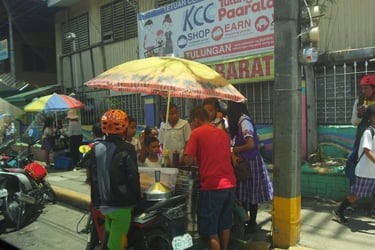
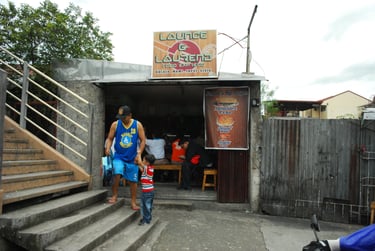
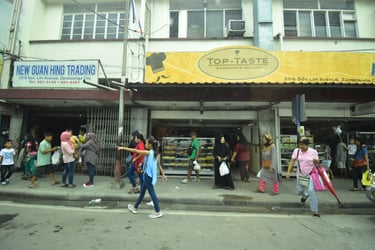

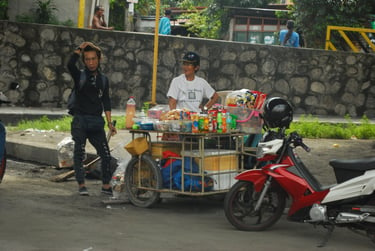

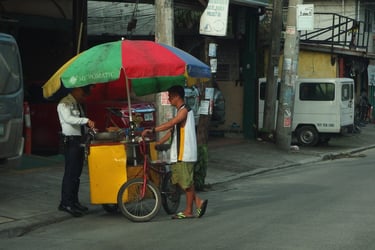
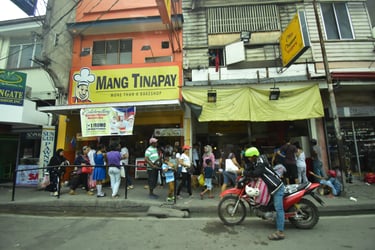








Street photos of eateries and food stalls in manila and zamboanga taken by richard lasam
Homecooking culture
In this video, OTR Food & History highlights the misconceptions of many people on Filipino food and, in the process, brings up the “homecooking culture” that’s easy to miss, especially by tourists exploring the street food scene.
In the second feast featured in the video, they eat at a hidden restaurant called New Mabuhay. The host Adam Gottschalk says, “There’s something special about eating in this way…” as he describes the experience of meeting the Filipino couple who served as his hosts for lunch—the conversation they shared as the smell of homecooking wafted in the air. “It’s fun, and honestly, there’s something about this way of eating that makes the food somehow taste even better.”
Favorite meals, favorite cooks
When Filipinos recall their favorite meals, there’s always the grandmother or the mother (or the father or the great grand aunt) in the background doing magic in the kitchen before the delicious fare comes out. Nary a fiesta table is set without the creativity of the family cook behind it. No one really boasts of buying the adobo, the sinigang, or the caldereta from somewhere—and if such is involved, it’s usually boasting on the provenance of the ingredients.
Realizing this, I appreciate my heritage cuisine a lot more. Philippine cuisine is more than the sum of Austronesian sensibilities, local landscapes, local ingredients, historically added ingredients, and foreign influences. It is cuisine plus a close-knit family culture. It is food firmly attached to caring for others—from the “ibang tao” or outsiders like visitors dropping by the house to celebrate the town fiesta, to the closest of family ties like the husband who finds dinner waiting as he comes home from a long day of work.
The aforementioned “boring” quality of Filipino street food points to the fact that our street food-eating public only nibbles at snacks on the way to something more special. And special is the word—not necessarily fancy or festive—because a lot of these homecooked meals are simple joys: a meal shared with loved ones and prepared by loved ones. It’s no wonder many Filipino restaurants and food products are named after beloved family members!
